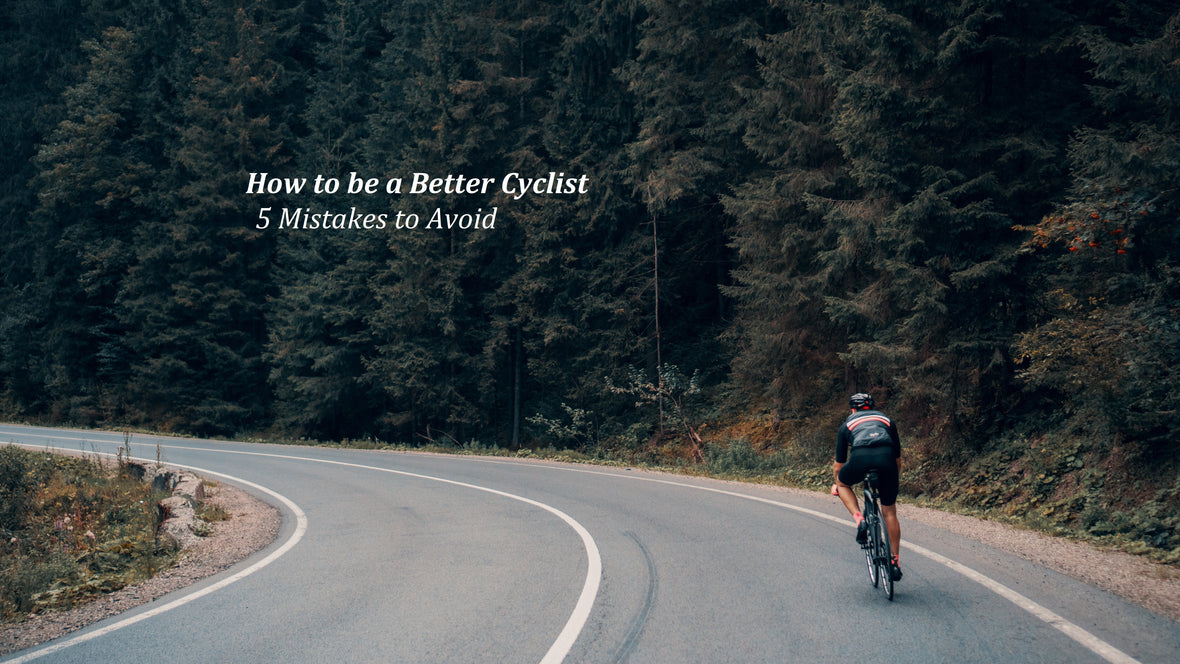
5 Cycling Mistakes to Avoid
Tyler Klein2 comments

Starting a new sport or hobby such as cycling is exciting but there is always a learning curve for something new. This post will help you make sure you ride more pro and be a better cyclist.
Not Having a Spare Tire or CO2
You haven’t taken a ride in weeks. You’re eager to finally get out of the house, leave the stressful work week behind, and relax on your bike. You feel the wind in your hair, the sun on your skin, and the freedom of not being on anyone else’s time. 5 miles into this bliss you hear a hiss followed by the awful feeling of bare aluminum riding on concrete. You have a flat tire. Now, this wouldn’t be so much of a deal (besides killing all excitement you had for riding your bike) if you had a CO2 container/ pump and an innertube, but no; you were in a hurry to get out the door.
Always bring along a spare tube and either a pump or CO2!
There is nothing worse than walking back 5 miles in lycra and cycling shoes to your house. I wouldn’t wish this on my worst enemy.
Check out our CO2 here.

Photo from: John Hutchinson via The Sun
Having Your Skewers in an Improper Position
The start of a cat 5 race always has electric energy, between the people crippled with a mixture of fear and excitement from never racing before and the seasoned pros wanting to move up to 4, there is always a positive buzz. Before the race chances are there will be someone who makes the announcement: “Make sure your skewers are facing forward and tight!” As wild as it may seem, there are a lot of crashes caused by skewers coming undone. When in a race, the pack is always tight; having your skewer pointing backward toward the rider behind you is a good way for the rider to bump up close and inadvertently undo your skewer. This will cause a chain reaction of pain, much more so than doing 1000 watts at 200 BMP. Always make sure that your skewer is in the forward-facing position and that it is tight. When you’re hopping down a curb the last thing you want to happen is your front wheel coming off. Check the link below the photo below, it’s a great video explaining the topic.

Not Wearing the Correct Clothing
So often I will see a cyclist ride by on a cold day wearing the bare minimum of clothing and I always wonder how they are able to stay so warm. The simple truth is that 9 times out of 10, they’re miserable. Making sure to bring the proper amount of clothing is so important. Weather can change fairly quickly, and you don’t want to be caught out in freezing rain with shorts on. The golden rule is that it’s always better to bring more than you’ll need rather than be SOL. Unless you’re riding in your local nude bike ride, it’s always best to come prepared.
Using the Front Brake Incorrectly
One lesson that I wish was taught to me before I started cycling. The mystique surrounding the front brake – when to use it? How to use it? I was lucky enough to survive life until around 13 years old without having a front brake mishap. I had just gotten an HTC Highroad (of course white) cycling kit and took my bike out for a ride. I was going downhill casually eating a cliff bar when I used my front brake to slow down. Next thing I knew I was face down having flipped over my handlebars. The front brake provides more braking power than the rear, but it can be dangerous if used incorrectly. It's always a great idea to use it in combination with the rear but always use it lightly. When doing a hard brake, shift your body weight towards the rear of the bike to ensure that you won't flip over the bars.

Don't Leave Your Tires Underinflated
The tires are your connection to the road so it’s important to have them in proper working order. Much like the proper position fit on a bike, there is a textbook answer and then there is the personal preference answer. There will be a more expansive guide coming soon but a good rule of thumb is to check the PSI ratings on the sidewall of the tire. Many road tires are from 80-115 PSI where mountain and hybrid are lower at around 35-65 and 60-85 respectively. If the conditions are wet, rocky and anything but smooth, it's always recommended that you ride at the lower PSI in the range to ensure proper comfort.



Comments (2)
The brake one is all too true. It’s so easy to misuse the front brake but you describe it in a good way. You have to use it in combination like you said
I disagree with the advice about using the front brake. It should the primary brake, with the rear brake employed as an auxiliary brake. Relying on the rear brake more the the front brake can lead to a skid. The break then will be a collarbone or wrist or worse.